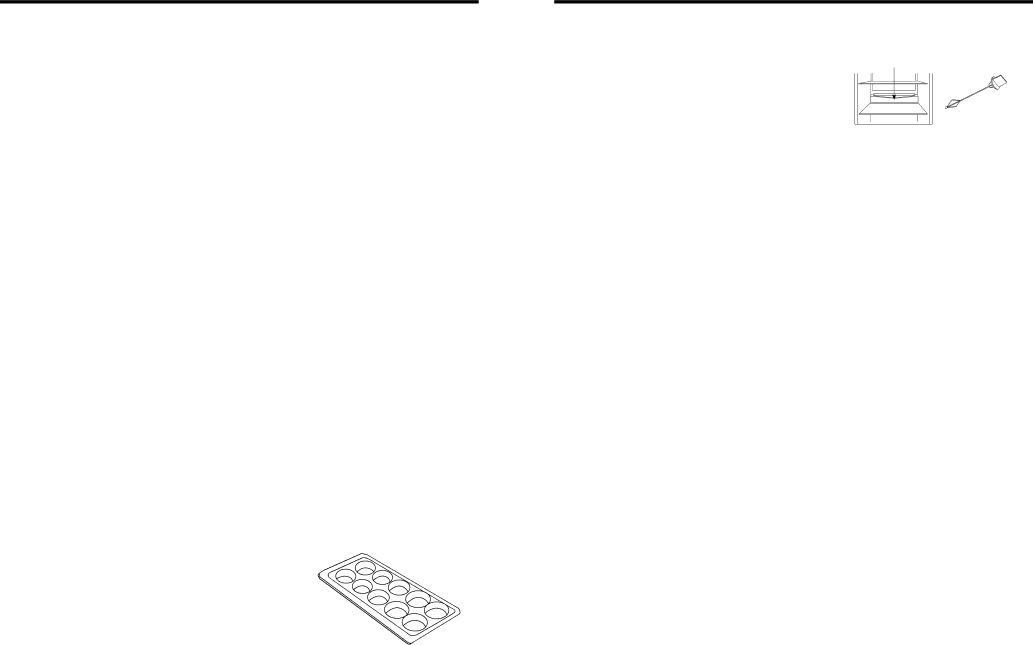
Instructions
Long-term storage of food
As the freezer storage temperature is very low, fresh food can be stored in the freezer compartment for a long time. Food requiring
Frozen food storage
Defrosting the cold storage compart- |
|
ment | Water outlet, |
| |
The cold storage compartment is designed for |
|
| |
automatic defrosting. Frost formed on the back wall |
|
will melt and flow via the drainpipe to the evaporat- |
|
ing container over the compressor on the back of |
|
the refrigerator, where the heat generated by the |
|
compressor will evaporate the water. |
|
cleaning rod
*The recommended weight of fresh food is less than 2 kg .
*Hot food should not be stored in the refrigerator until it has cooled down to room temperature.
*The outside of any food packing should dried before storage in the freezer, and any packing materials should be
*Only remove the required amount of food from the refrigerator. Defrosted food cannot be
*Food cut into small portions will freeze faster and be easier to defrost and cook. The recommended weight for each portion is less than 1.5kg.
*Do not put in bottled beer or drinks.
*Do not touch frozen food
Making water-Ice
*Pour water into the water ice mould up to
freezing compartment.
* Do not a use knife or other metal tools to take the ice out of the mould.
*The ice can be easily removed by hand after the mould has been placed in warm water for a short time.
Caution: Always keep the drain over the vegetable and fruit tray clear to ensure the normal flow of defrosted water. Use the rod provided to clear any blockages.
Defrosting the freezer
After a period of operation, a layer of frost will form on the surface of the freezer. Addi- tional electricity will be consumed if this layer becomes too thick. The defrosting process must be carried out when a thick layer of frost has been formed.
To defrost the freezer, first disconnect the power by unplugging the refrigerator, and then remove any food from the refrigerator and place it in a cool place. Use a plastic defrost- ing tool.
After ice and frost are melted, wipe up the inside of the freezer compartment.
Caution: Never use a metal tool or electrical heater for defrosting.
After the defrosting is completed, plug in the refrigerator and it starts operation again.
Power failure
Even in summer, food can be stored in the refrigerator for a few hours after a power failure.
*Don't put additional food into the refrigerator during a power failure.
*Avoid opening the door during power failures
*If prior notice of a power failure is given, make some ice and put it in a container in the top
of the cold storage compartment.
Caution: temperature in the refrigerator will rise during a power failure or in the
event of technical problems, and the storage period will be reduced.
NN | NO |